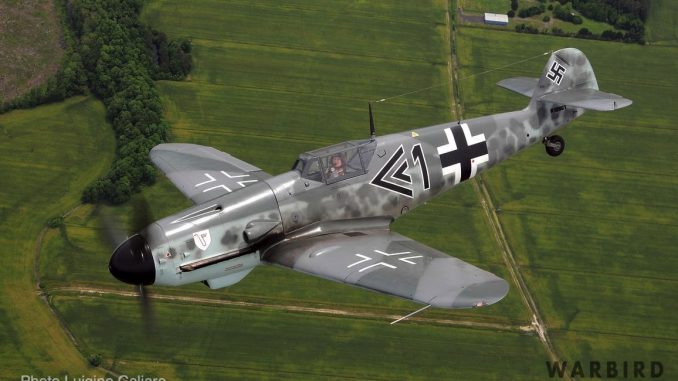
By Luigino Caliaro
English adaptation Stephen Chapis
This May 20th marks the fifth anniversary of the first flight in U.S. soil of the Military Aviation Museum’s (MAM) Messerschmitt Bf-109G-4, WkNr 19257, just prior to the 2016 Warbirds Over The Beach Airshow. The story of how the rare Luftwaffe fighter ended up in the skies of Virginia Beach, starts on May 5, 1943, when Feldwebel Viktor Peterman, who was then assigned 5./JG 52 force landed his Gustav after the coolant system was damaged during an engagement with Russian fighters. However, before being forced down he scored his 30th, 31st, and 32nd victories. It took Petermann four days to walk back to his airfield and went on to score another 32 victories, all on the Russian Front, before he was captured by American forces in Czechoslovakia. Petermann passed away on May 19, 2001 at the age of 85.
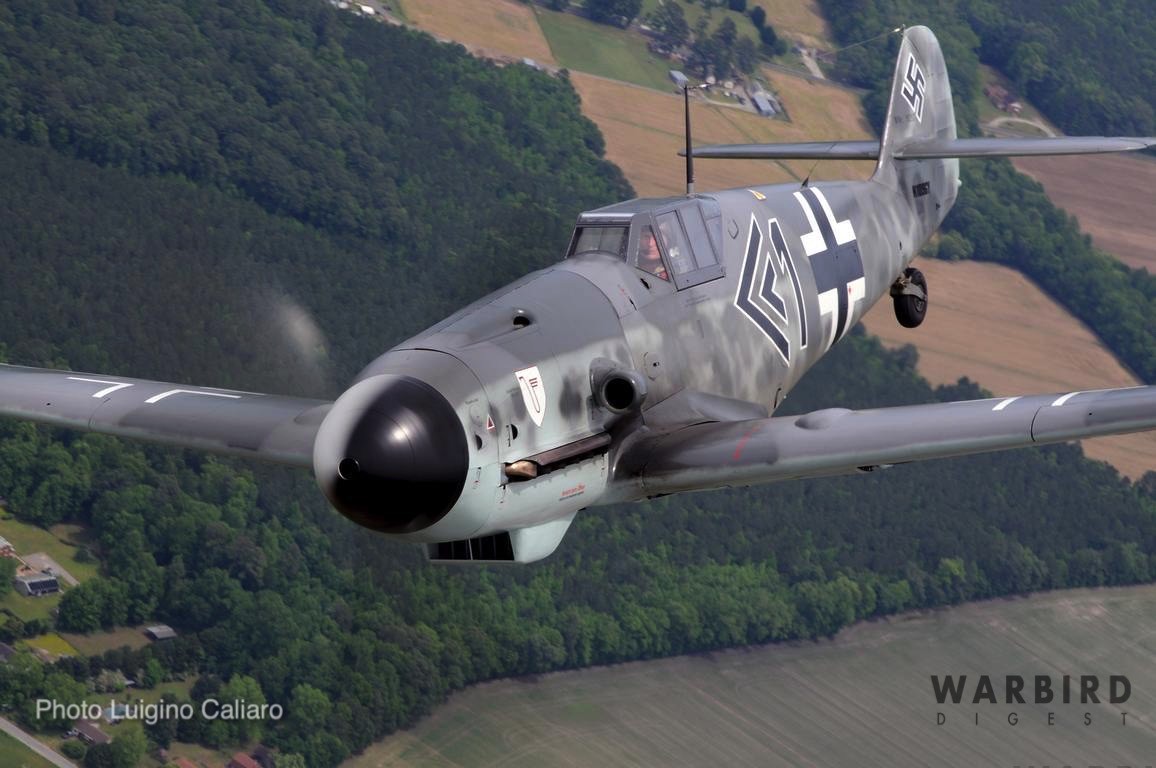
The G series was introduced in mid-1942 and the initial variants, G-1 through G-4, differed only in minor details from the Bf 109F, Freiedrich, most notably a more powerful 1,455-hp DB 605 engine. The G-1 was equipped with a pressurized cockpit while the G-2 was unpressurized, but the type reverted back to a pressurized cockpit on the G-3. The G-3 was also fitted with larger main wheels, which required the wings to be bulged slightly, and a larger and non-retractable tailwheel.
The original plan for the restoration was to combine whatever usable components from Petermann’s Gustav with parts from Hispano HA-1112-MIL s/n C.4K-64 Jerry Yagen had in storage. When everything was examined by the technicians at MeierMotors GmbH in Eschbach, Germany in 2005, they, along with Yagen, decided to use as much of the Messerschmitt as possible. When the aircraft was completed German officials (LBA – Luftfahrtbundesamt) determined there was enough original parts to title the aircraft as “Messerschmitt Bf109 G-4, WkNr 19257”. One departure from original was fitting a composite propeller owing to the scarcity of original blades. The new propeller however, matches the profile of those originally fitted to the Gustav series of fighters. On August 15, 2015, British pilot, Charlie Brown, performed the first post restoration flight from the Meier Motors facility.
When it came time to paint the Gustav, the MeierMotors team, who had spent much time speaking with the Alten Adler (Former Luftwaffe Pilots), recommended the personal aircraft of GruppenKommandeur Hptm Klaus Quaet-Faslem of the I/JG3 “Udet” while the unit was based in Germany in mi-1943. This historic fighter wing was founded in 1939 and served on every front in the European theater from London during the Battle of Britain to Stalingrad before falling back to defend the Reich from the onslaught of B-17 and B-24 Veirmots, during which pilots make mas head-on attacks and ram bombers if necessary. Klaus Quaet-Faslem was born in Kiel on September 5, 1913 and scored 49 aerial victories before he was killed in a flying accident on January 30, 1944. He was posthumously awarded the Knight’s Cross.
The Gustav is displayed alongside the other Warbirds at the Military Aviation Museum today, flanked by other rare and unusual restorations, including a number of significant Luftwaffe types, both flying and static. From the Fw-44J Stigeleitz and Bucker Jungmeister to the Ju-52 (CASA 352). Also in the collection, but not currently on public display is a modern reconstruction of an Me 262.
The collection is appropriately housed in the historic Cottbus hangar that was originally designed by Osdeutsche Landwerkstatten GmbH to be raised quickly and easily transported, with curved arches designed with no interior columns to provide for maximum usable space. Erected in 1934, it housed notable Luftwaffe types from the Fw200 to the Ta 152. On May 29, 1944, the hangar was severely damaged during an Eighth Air Force bombing raid, but it was repaired and used throughout the Cold War. In 2000, the hangar was acquired by Jerry Yagen, dismantled and moved to the Military Aviation Museum site in Virginia Beach and erected on the western end of the airfield
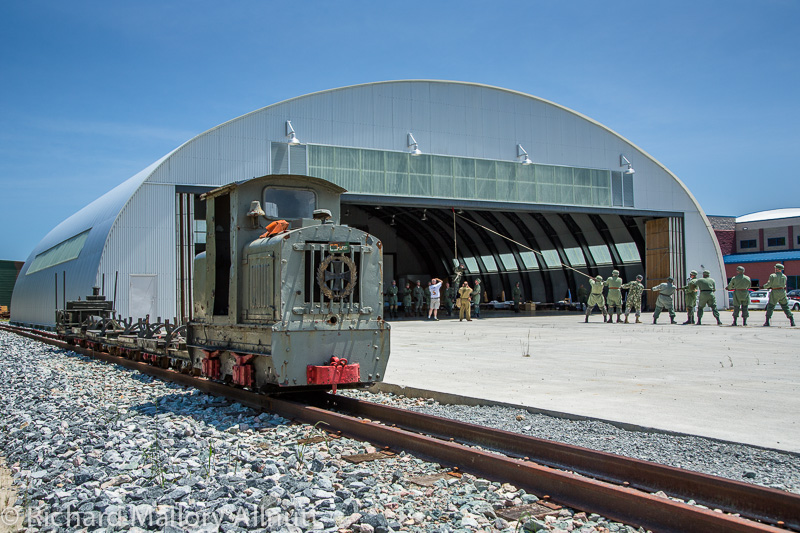
Although the Cottbus Hangar continues to be closed to the public due to COVID precautions, Bf 109G is scheduled to fly as part of the Museum’s Summer of Flight Program on August 7th, 2021 For more information about the Military Aviation Museum visit www.militaryaviationmuseum.org/
A special thanks to Luigino Caliaro for helping with the drafting of the article and the photos. FOr more information about Luigino’s work visit www.aerophoto.it


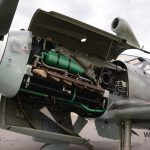
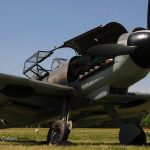
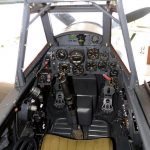
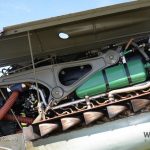
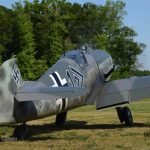
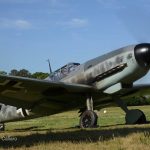
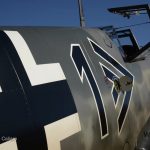
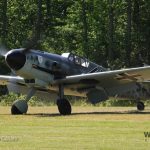
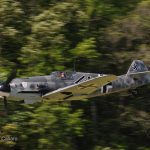
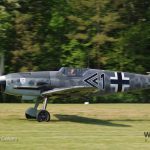
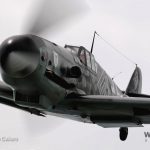
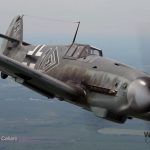
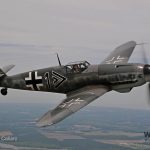
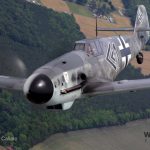
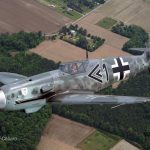
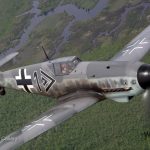

Fabulos pictures and aircraft!!!!
Fantastic retauration work!!!!
Odd
Great story beautiful pictures historic aircraft thank you so much for all involved in this restoration and storyu
Beautiful and faithful restoration of an important and significant part of the Luftwaffe.
Adolph Galland would be impressed.